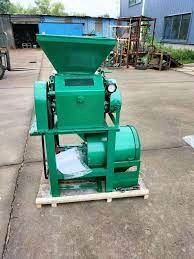Processing grains before feeding them to livestock is essential for enhancing nutrient availability and improving animal performance. The choice of milling equipment—specifically roller mills versus hammer mills—significantly influences the nutritional value of the grains.
The Challenge: Overcoming the Seed’s Natural Defenses
Grains possess natural protective structures, such as hulls and seed coats, that can impede nutrient absorption in livestock. Effective milling breaks down these defenses, making nutrients more accessible.
Roller Mills Enhance Nutrient Availability
Roller mills are designed to crush and shear grains, effectively disrupting the protein matrix of the endosperm and enhancing starch digestibility. This process results in a more uniform particle size, which can improve feed efficiency and animal performance.
Without Sorting, Overall Nutritional Value Remains Unchanged
While milling improves nutrient availability, it doesn’t inherently increase the total nutritional content of the grain. Without sorting or supplementing, the overall nutritional value remains the same; milling merely makes existing nutrients more accessible to the animal.
Hammer Mills Can Alter Nutritional Value
Hammer mills, which pulverize grains into finer particles, can lead to over-processing, resulting in excessive fines. This over-processing can negatively impact nutrient digestibility and may cause digestive issues in livestock.
Find the Best Mill for Your Operation at Automatic
Selecting the appropriate milling equipment is crucial for optimizing livestock nutrition. Automatic offers a range of roller mills designed to meet the specific needs of your operation, ensuring efficient processing and improved animal health.
In conclusion, choosing the right milling equipment is vital for enhancing the nutritional value of grains fed to livestock. Roller mills provide a balanced approach, improving nutrient availability without over-processing, thereby supporting optimal animal performance.

